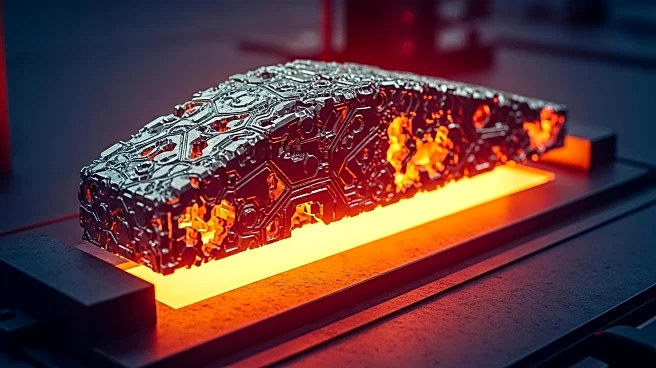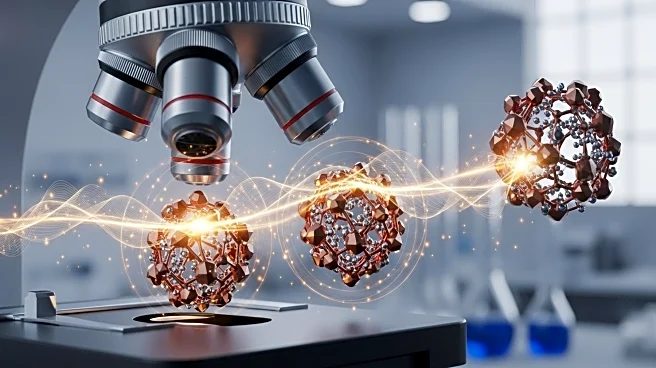What's Happening?
Researchers at the Karlsruhe Institute of Technology (KIT) have developed a new refractory metal-based alloy that could significantly enhance the efficiency of aircraft engines and gas turbines. The alloy, composed of chromium, molybdenum, and silicon, is notable for its ductility at ambient temperature and its high melting point of approximately 2,000 degrees Celsius. Unlike existing refractory metals, which are prone to oxidation at high temperatures, this new alloy oxidizes slowly, even in critical temperature ranges. This breakthrough, published in the journal 'Nature,' could lead to components that operate safely at temperatures higher than 1,100 degrees Celsius, potentially increasing efficiency in combustion processes.
Why It's Important?
The development of this novel alloy is significant as it addresses the limitations of current superalloys used in high-temperature applications. Existing superalloys, while resistant to oxidation and ductile at room temperature, are limited to operating temperatures of up to 1,100 degrees Celsius. The new alloy's ability to withstand higher temperatures could lead to a reduction in fuel consumption by approximately five percent, which is crucial for aviation and power generation industries. This advancement could also contribute to lower CO2 emissions from stationary gas turbines, aligning with global efforts to reduce environmental impact.
What's Next?
Further development steps are necessary to bring this alloy to industrial application. The research team at KIT has laid the groundwork for future advancements, and research groups worldwide are expected to build on this discovery. The potential for a technological leap in high-temperature applications could lead to more efficient and environmentally friendly energy solutions, particularly in aviation and power generation sectors.
Beyond the Headlines
The discovery of this alloy not only promises technological advancements but also highlights the importance of fundamental research in driving innovation. The ability to predict material properties such as oxidation resistance and ductility remains a challenge, underscoring the need for continued research and development in materials science. This breakthrough could pave the way for new materials that enhance efficiency and sustainability in various industries.










